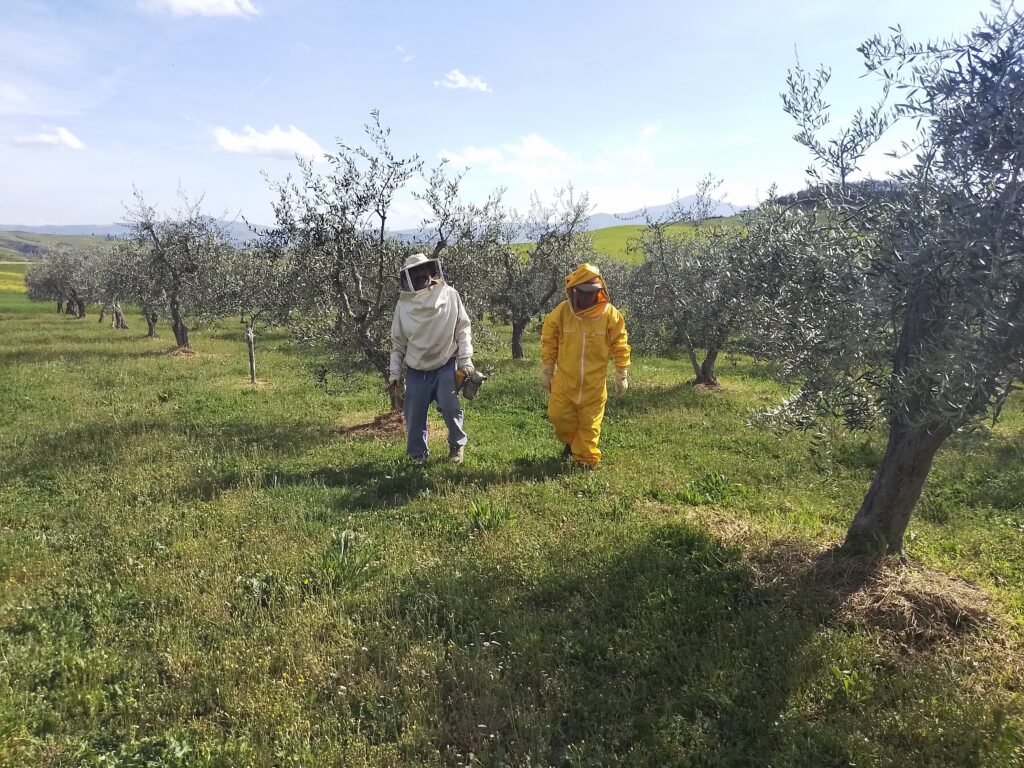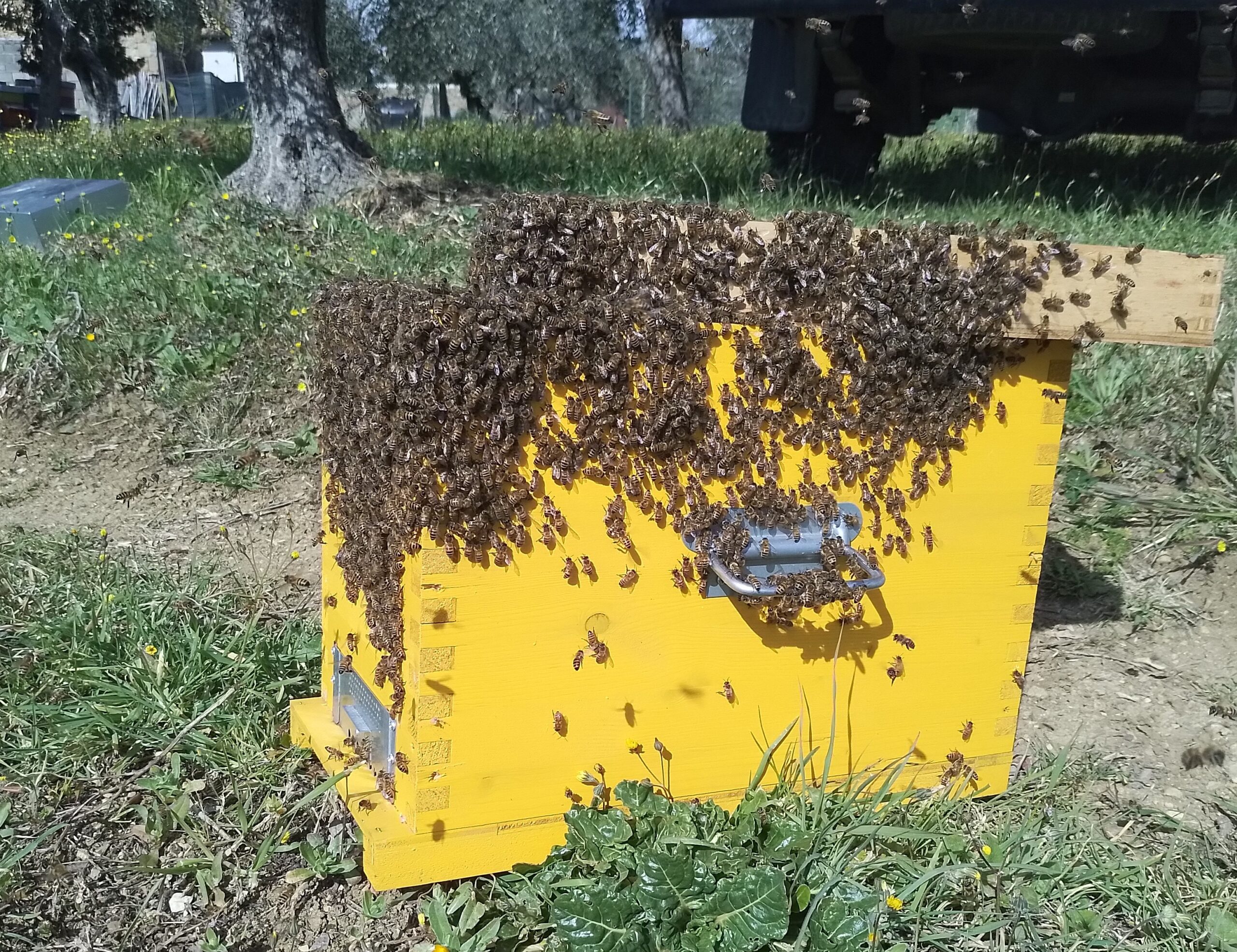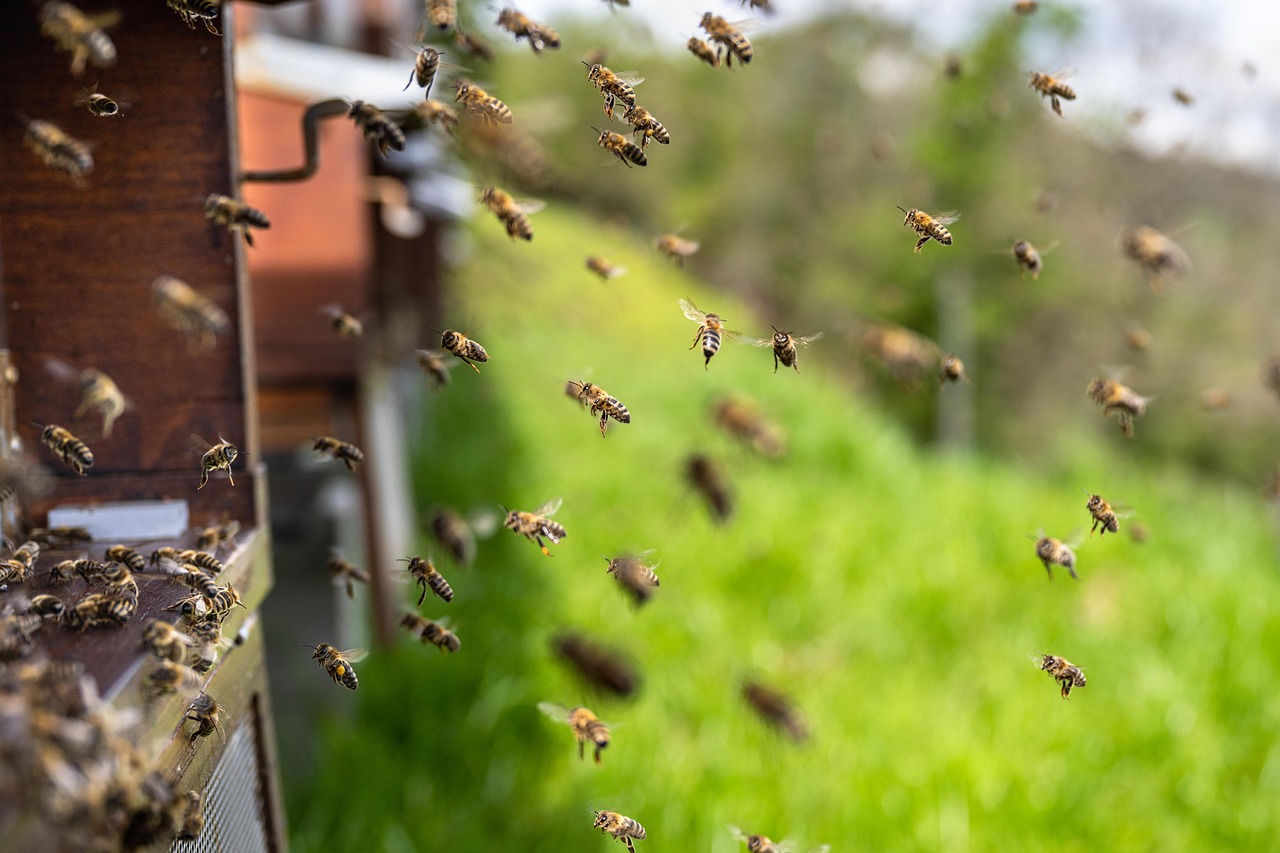Spring is in full swing in April! Fruit trees and flowery meadows that bees are greedy for. A background buzz and many colors and scents.
This is the perfect time to create new bee families: divide old families to create new ones to enlarge the apiary and avoid swarming. It’s also the perfect time to discover the life of the hive and bees!
Let's get to know bees better...
The worker bee holds control of all life in the hive. She is a tireless worker and has many tasks. Her body is equipped with very sophisticated tools, which allow her to perform multiple tasks.
The WINGS maintain a correct ventilation inside the hive for which the temperature is always perfectly regulated. The LOWER LIMBS have sacs to carry pollen and propolis inside the hive. The LINGULA is used to collect the nectar droplets in a special bag; the JAWS to collect waste and expel them from the hive.
The development cycle of a worker bee lasts 21 days, of which the first 3 are developed in the form of a tiny egg which remains in the hive cell. On the fourth day the egg matures into a larva until it becomes a pupa on the ninth day. Once its maturation is complete, the new bee is born. Throughout her life (which lasts about 40 days), the worker bee changes tasks based on age.
Just born, in the first 3 days of life, our worker bee has the task of CLEANING BEE that cleans the honeycombs of the hive, preparing the cells for the new brood, coating them with propolis so that the queen can lay her eggs. Afterwards she transforms into a NURSERY BEE and takes care of the nutrition of the larvae and of the one destined to become the new queen. At this moment the bees have functioning particular glands capable of producing royal jelly.
But the roles of worker bees are truly multiple. The next is that of WAX BEE to build or repair damaged honeycombs. It then becomes UNDERTAKER BEE which eliminates dead bees and waste present inside the hive, maintaining a high level of hygiene. At this point it is time to transform into a STORAGE BEE to place pollen and nectar collected by her mates in the honeycombs. In succession GUARDIAN BEE which defends the family from external aggressors and FAN BEE which, with the movement of its wings, maintains the correct temperature inside the hive, based on the external climate.
The worker bee spends its life up to the 21st day exclusively inside the hive, only after which she will finally be able to go out into the open air becoming FORASTER BEE, to obtain nectar, pollen and water. In addition to this, she will go on patrol tours in the colony to understand the real needs of the family.
Another very important task carried out by the worker bee is that of STOVE BEE to ensure the heating of the brood and give warmth to the pupae. The DRONE BEES who take the place of the queen in the event of an orphan colony. In a last-ditch attempt to keep the colony alive, the drone bees begin to lay eggs which, however, will only give birth to drones, or male bees, and this will inevitably lead to the death of the family.
The hive: a big family!
The QUEEN BEE is the heart of the family, lives an average of 4 – 5 years and is responsible for reproduction, which is her only task. Families are very numerous. They are made up of around 10,000 bees in the winter and can number up to 50,000 bees in the spring and summer. The queen bee lays around 2,000 eggs a day. Its abdomen is larger and longer; the wings are shorter as they have to spend their entire life inside the hive. It will face the flight only for the nuptial flight or mating flight, or for the swarming.
The queen bee feeds only on royal jelly, which is deposited in her mouth by the nurse bees, and her sting is not intended for defense but only serves to fight against any rival queens.
Finally, the DRONE is the male bee. His sole purpose is the fertilization of the queen, even if this act immediately causes his death. The drones are raised in spring-summer together with the queen. The drone is easy to recognize with a more stocky and robust body; size is bigger. He has no sting, doesn’t have the task of foraging and is in small numbers within the hive, from 100 to 200 specimens.
If you too, like us, want to get to know the life of a beehive up close, especially in spring, contact us now!





